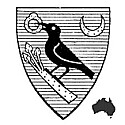
















Fashion plates from the 1870s from the Hungarian Electronic Library. [via]
skip to main |
skip to sidebar


analytics
Books~~Illustrations~~Science~~History~~Visual Materia Obscura~~Eclectic Bookart.

Contact | Who?
Recommended Blogs
Blog Archives
Resource Sites
- digital nz
- library of congress
- british library
- library france
- library holland
- library spain
- library portugal
- european library
- library australia
- collections canada
- digital poland
- nypl digital
- botanicus digital
- v&a collections
- britmuseum prints
- smithsonian search
- smithsonian galaxy
- f.a.m.s.i.
- casglu'r tlysau
- rumsey collection
- manuscript catalogue
- digital scriptorium
- cesg manuscripts
- swiss manuscripts
- pecia mss blog
- digital book index
- rare book room
- online exhibitions
- primary sources
- worldcat search
- library directory
- digital librarian
- intute resources
- warburg institute
- lexilogos links
- digiwiki links
- museum blogs
- book arts web
- culture archive
- conservation articles
- art-history timeline
- visual arts
- arts journal
- artcyclopedia
- ukiyo-e
- calligraphy megapage
- penmanship
- woodblock
- coconino
- alchemy website
- health hist. img-banks
- health history links
- history network
- new advent


















8 comments :
OK, I was putting off dealing with them, but with the Hungarian fashion plates up, it was clearly time to post the 1909 Czech version. Now up at http://calypsospots.blogspot.com/2007/03/fashions-of-1909.html, though a little scruffier looking than these since I had to do my own photography.
wonderful! thanks for posting them. the "tails" on that last are truly dinasoric! and thanks for another great resource.
Funny how the Hungarian titles give these the look of something unfamiliar -- as if the outfits in the improbable engravings were really just cooked up for ladies in a culture where only 10,000,000 people spoke the language. What a sense of occasion it would provoke, to enter the home of a friend gotten up like that -- your train alone would make you feel papal. Many thanks!
Thanks Karla - very nice.
Lotusgreen, I was actually thinking that instead of tails, these were complete whales in place of whalebone corsets.
Elatia these are surely for the elite. I tried unsuccessfully to find out a little about what publication these came from. It's interesting that all of them have full descriptions/signatures etc at the bottom of the page. I wonder if they weren't a subscription print series for the upper crusties.
Perhaps some Max Ernst collages with the scaly-tailed sorts would complement the dinasauric tails. I'm forgetting which of the collage novels has these...
I'm sure the purchasers of the Hungarian garments were elite, but that quite a few not-so-elite also looked at the plates, just as people do with fashion magazines today. It's also possible that (as in the Czech examples I photographed) these are French fashions repackaged. Perhaps someone who reads Hungarian can enlighten us...
I recall that Divaktep means fashion plate. And I'm now thinking that these are actually advertisements with prices for the Budapest bazaar. And by the look of them, these plates have been through more than just a few hands. So I still wonder if these were single leaf or in a book or maybe they were for hanging up as poster adverts?
ckSorry for the late comment - I have just stumbled upon your blog (and I am planning to dive in it). Magyar Bazár was a popular glossy magazine in the XIX.th century (and in the early XX.th)... fashion, chick-lit, some gossip about the elite, etc. You were right, the engravings are ads. It says: Costumes and textiles: Alter&Kiss, the purveyors by appointment of Her Majesty, The Queen _(Elizabeth, the wife of Franz Joseph)_ Budapest, Váczy street; Perfumes: Sándor Vértessi, the Hungarian royal perfumery, Kristóf 1., Budapest.
Thanks Kitsune, maybe I will email you next time I can't read Hungarian!
Post a Comment
Comments are all moderated so don't waste your time spamming: they will never show up.
If you include ANY links that aren't pertinent to the blog post or discussion they will be deleted and a rash will break out in your underwear.
Also: please play the ball and not the person.
Note: only a member of this blog may post a comment.